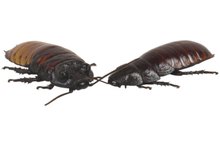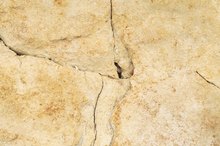What does fact checked mean?
At Healthfully, we strive to deliver objective content that is accurate and up-to-date. Our team periodically reviews articles in order to ensure content quality. The sources cited below consist of evidence from peer-reviewed journals, prominent medical organizations, academic associations, and government data.
The information contained on this site is for informational purposes only, and should not be used as a substitute for the advice of a professional health care provider. Please check with the appropriate physician regarding health questions and concerns. Although we strive to deliver accurate and up-to-date information, no guarantee to that effect is made.
The Dangers of Food Grade Diatomaceous Earth Exposure
Diatomaceous earth is made of silicon dioxide, It's also known as amorphous silica and silica powder among other names. The name diatomaceous earth refers to the source of the material as a powder made up of the crushed fossilized skeletons of prehistoric creatures. Both coarse and fine ground diatomaceous earth is available as a food grade substance.
Ingestion Risks
Food grade diatomaceous earth is not poisonous to humans and many food manufacturers use it in food preparation. The diatomaceous earth has chemical properties which prevent food from caking so it can flow properly and liquids from foaming. It also affects the germination of seeds and can be part of a filtration process. The material is hygroscopic so it also plays a role in keeping foods dry. The powder is also not dangerous to touch.
- Food grade diatomaceous earth is not poisonous to humans and many food manufacturers use it in food preparation.
- The material is hygroscopic so it also plays a role in keeping foods dry.
Inhalation Dangers
What Are the Dangers of Ethylene Vinyl Acetate?
Learn More
The major danger of food grade diatomaceous earth arises from the fact that it is a powder and is made from silica. A person can inhale powder into the lungs and become ill. The Centers for Disease Control and Prevention states that inhaled silica can cause a range of diseases such as silicosis 1. Other diseases of the lungs can also be made more likely from inhaling silica, such as tuberculosis. Exposure to silica may also be involved in the development of other non-lung related diseases such as autoimmune problems and chronic kidney disease. These dangers are more likely to occur with repeated exposures to the substance.
- The major danger of food grade diatomaceous earth arises from the fact that it is a powder and is made from silica.
- Other diseases of the lungs can also be made more likely from inhaling silica, such as tuberculosis.
Irritation Risks
The diatomaceous earth powder particles can also cause irritation because of their small size and abrasive properties. If a person is exposed to the powder, the powder can get into the eyes, which are sensitive to dust. The eyes may become red and scratched, although this effect is temporary. The dust can also irritate the lining of the throat and the inside of the nose.
- The diatomaceous earth powder particles can also cause irritation because of their small size and abrasive properties.
Cancer Risks
What Happens If Borax Is Ingested?
Learn More
Food grade diatomaceous earth is not intrinsically carcinogenic, but the changes to the lungs that a person can suffer from through silica exposure can lead to lung cancer.
Safety Precautions
To negate the inhalation risk of the silica, the dust should be handled in a ventilated area. A person who is exposed to food grade diatomaceous earth dust should move to an area of fresh air. He should wash his eyes out with clean water, drink clean water to remove particles from his throat and blow his nose to remove dust trapped there. The dust can be especially irritating to a person with a pre-existing disease of the airways such as bronchitis, emphysema or asthma.
- To negate the inhalation risk of the silica, the dust should be handled in a ventilated area.
- A person who is exposed to food grade diatomaceous earth dust should move to an area of fresh air.
Related Articles
References
- Centers for Disease Control and Prevention: Silica
- Martin, KR. The Chemistry of Silica and Its Potential Health Benefits. Journal of Nutrition, Health, and Aging, 2007.
- Martin, KR. Silicon: the Health Benefits of a Metalloid, Journal of Metal Ions in Life Sciences, 2013. DOI: 10.1007/978-94-007-7500-8_14.
- Nieves, JW. Skeletal Effects of Nutrients and Nutraceuticals, Beyond Calcium and Vitamin D, Osteoporosis International Journal, 2013. DOI: 10.1007/s00198-012-2214-4.
- Ravin, Jugdaohsingh et al. Dietary Silicon Intake and Absorption, The American Journal of Clinical Nutrition, 2002. DOI: 10.1093/ajcn/75.5.887.
- Supannee, Sripanyakorn et al. The Comparative Absorption of Silicon From Different Foods and Food Supplements, British Journal of Nutrition, 2009. DOI: 10.1017/S0007114509311757.
Writer Bio
Jillian O'Keeffe has been a freelance writer since 2009. Her work appears in regional Irish newspapers including "The Connacht Tribune" and the "Sentinel." O'Keeffe has a Master of Arts in journalism from the National University of Ireland, Galway and a Bachelor of Science in microbiology from University College Cork.









